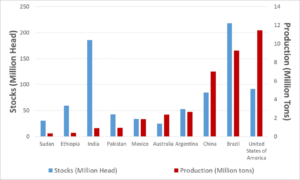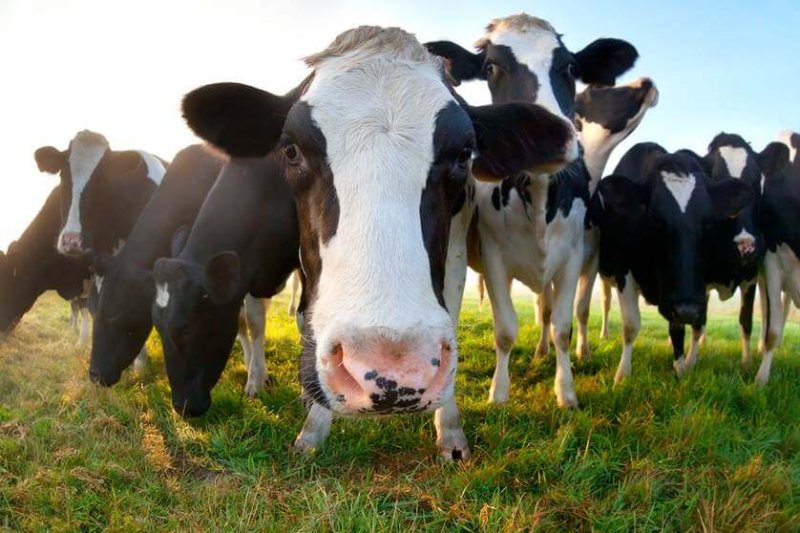“Avoiding meat and dairy is the single biggest way to reduce your impact on earth,” read a headline in the UK Guardian, introducing the study published in Science by Joseph Poore, a zoology professor at Oxford, and Thomas Nemecek, a scientist at LCA Research Group in Zurich, Switzerland. Further, the Guardian quoted Poore as saying “A vegan diet is probably the single biggest way to reduce your impact on planet Earth, not just greenhouse gases, but global acidification, eutrophication, land use and water use.”
Poore’s study did indeed study GHGs, acidification, eutrophication, land and water use. But the paper does not conclude a recommendation of veganism. Instead, it calls for producers to monitor impacts, and find different ways to produce foods.
The study was a meta-analysis, a review of 570 studies of 38,700 farms and 1,600 processors, packagers and retailers. It found that agriculture has a massive impact on the planet—meat and dairy provide 18 percent of calories and 37 percent of protein, while using 83 percent of all farmland and generating 60 percent of agriculture’s greenhouse gas emissions. And it did look at the impacts on five environmental criteria according to production methods. But oddly, the paper’s conclusions—and the media pickup—focused on greenhouse gas emissions.
Poore’s study showed huge variations in production methods. Beef cattle raised on deforested pasture produced 12 times more greenhouse gas and used 50 times more than beef raised on natural pasture. And beef produced six times more greenhouse gases and 36 times more land than raising protein from peas, for example.
One method was grass-fed beef, introduced because it was considered more humane and ecological sustainable than other methods of feeding livestock.
And people who have long opposed eating meat picked up on the story. George Monbiot, a writer and environmental activist in the UK, tweeted that “the food campaigners meant well but got it wrong: switching from intensive meat to free range meat means less cruelty but even greater environmental destruction. The switch should be to a plant-based diet.” In a video, Monbiot expands on his case:
[youtube https://www.youtube.com/watch?v=mm-MpiFYpAQ&w=535&h=315]So, is all meat not only murder but murderous to the planet? Is veganism the only path to ecological sustainability?
Not so fast, according to UC Davis animal geneticist Alison Van Eenennaam. “Sustainability” will depend on what variable you are optimizing—is it greenhouse gas? Land use? Acidification? Cruelty? Productivity? They don’t always point in the same direction, she warned.
“The best solution is always a more efficient production system like the US,” Van Eenennaam said in an email interview with the Genetic Literacy Project. “And the use of technologies like implants and ionophores, which of course everyone freaks out about.” These technologies involve:
- Growth promoting implants, such as growth hormones, that have been used for almost 50 years to improve growth rates by 10-30 percent, feed efficiency by 5-15 percent, and meat leanness by 5-8 percent). However, growth hormones and other implants have been criticized for being “unnatural” and possibly risky to health.
- Ionophores, feed additives that alter how food is fermented and ultimately digested in the cow’s rumen and improve conversion of feed to lean muscle mass. Although ionophores are not “true” antibiotics because don’t outright kill bacteria but inhibit bacterial function, they have come under fire because of overall public concerns about antibiotics in the food supply.
So far, technologies like genetic engineering have not yet been approved in cattle and nearly all livestock and may be unlikely to play a role given opposition from powerful non-governmental organizations.
A chart of productivity among different countries livestock from a “Dietitians’ Handout” by Van Eenennaam does point to a great deal of variability. Countries like the United States — and to a lesser degree, China — do show greater tonnage of meat from a given number of cattle. Others, like India, Ethiopia and Sudan, show dramatically less productivity.

Another study, by Ray Hilborn of the University of Washington, and his colleagues, compared the environmental cost of animal foods in more detail and found wild, wide variations:
- Greenhouse gas production was lowest in mollusk farming and smaller pelagic fisheries (salmon farming, white fish) and chicken, while catfish farms and beef were 20 times higher in GHG production.
- Energy use was lowest in mollusk and small pelagic fisheries, but livestock was still lower than all other types of aquaculture (beef required less energy than shrimperies, for example).
- Eutrophication was lowest in pelagic fisheries and mollusk and salmon farms, but higher in catfish and beef operations, though beef showed an extremely broad range of eutrophication.
- Acidification potential was lowest for mollusks, and small pelagic, white fish and salmon farms at the lower level. Beef production had the highest acidification impact, mostly due to (again) high variability among beef production studies.
“There are striking differences in terms of the environmental impacts of different animal source food production methods,” Hilborn and his colleagues wrote. “Because the range of variability is quite high, any proposed policy must consider the specific species and production system.”
Another point Van Eenennaam makes is that removing cows from fields does not necessarily result in improved sustainability. Instead, it leaves a fallow field, full of plant matter that is inedible to us, that must be re-sown. Even some plants do not get off the hook. Asparagus, for example, consumes a dramatic amount of fossil fuels, and therefore emits far more carbon dioxide, because of requirements to transport the vegetable to markets.
Instead of veganism, looking at the best way to get a gram of protein might point to true sustainability. Protein—especially animal protein—is the easiest way for developing countries to raise living standards, by providing enough to eat more cheaply. However, a cow raised one way can be more sustainable than a cow raised another way. All food production involves tradeoffs; optimizing product quality and safety, improving animal welfare, and decreasing impact on the environment and using natural resources efficiency all require reducing one in favor of another.
There’s no free lunch.
Andrew Porterfield is a writer and editor, and has worked with numerous academic institutions, companies and non-profits in the life sciences. BIO. Follow him on Twitter @AMPorterfield.































